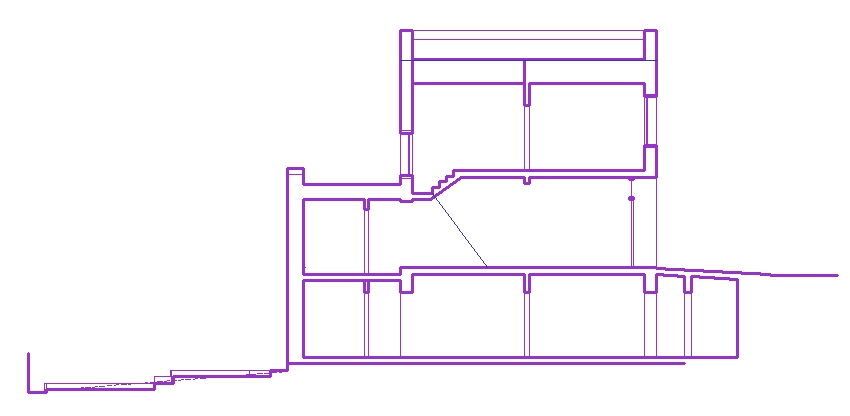Sections in building design
In terms of design, the term ‘section’ typically refers to a view of a structure as though it has been sliced in half or cut along another imaginary plane, which is generally, but not always a vertical plane. This is represented as a ‘section drawing’ or ‘sectional drawing’. This can be useful when designing or representing structures such as buildings as it gives a view that passes through spaces such as rooms and also through the building fabric, and this can reveal relationships between the parts of the building that might not be apparent on plans or elevations.
For more information, see Section drawing.
In a wider sense, 'section' can also refer to a specific part of a document, regulation, standard or agreement. For example, Section 50 agreement, Section 73 of the Town and Country Planning Act 1990, a planning obligation (section 106), and so on.
It can also be used in relation to a section engineer, the role of which is to lead a team of site engineers, usually on civil engineering and infrastructure projects. They are responsible for all engineering matters related to a project or specific part of a project, such as a road or tunnel. For more information, see Section engineer.
It may also refer to work sections, that is, parts of construction works. For example, NRM2 lists work sections for work section breakdown structures, used to prepare some types of bills of quantities. For more information, see Work section bill of quantities.
[edit] Related articles on Designing Buildings Wiki
Featured articles and news
Homes England creates largest housing-led site in the North
Successful, 34 hectare land acquisition with the residential allocation now completed.
Scottish apprenticeship training proposals
General support although better accountability and transparency is sought.
The history of building regulations
A story of belated action in response to crisis.
Moisture, fire safety and emerging trends in living walls
How wet is your wall?
Current policy explained and newly published consultation by the UK and Welsh Governments.
British architecture 1919–39. Book review.
Conservation of listed prefabs in Moseley.
Energy industry calls for urgent reform.
Heritage staff wellbeing at work survey.
A five minute introduction.
50th Golden anniversary ECA Edmundson apprentice award
Showcasing the very best electrotechnical and engineering services for half a century.
Welsh government consults on HRBs and reg changes
Seeking feedback on a new regulatory regime and a broad range of issues.
CIOB Client Guide (2nd edition) March 2025
Free download covering statutory dutyholder roles under the Building Safety Act and much more.
Minister quizzed, as responsibility transfers to MHCLG and BSR publishes new building control guidance.
UK environmental regulations reform 2025
Amid wider new approaches to ensure regulators and regulation support growth.
BSRIA Statutory Compliance Inspection Checklist
BG80/2025 now significantly updated to include requirements related to important changes in legislation.
























Comments